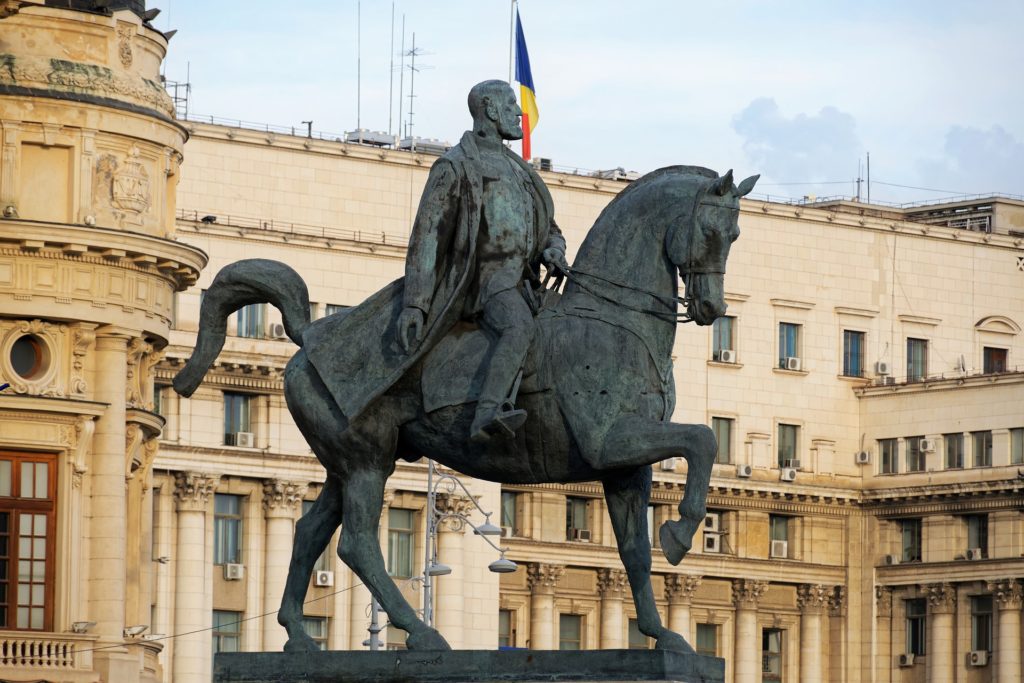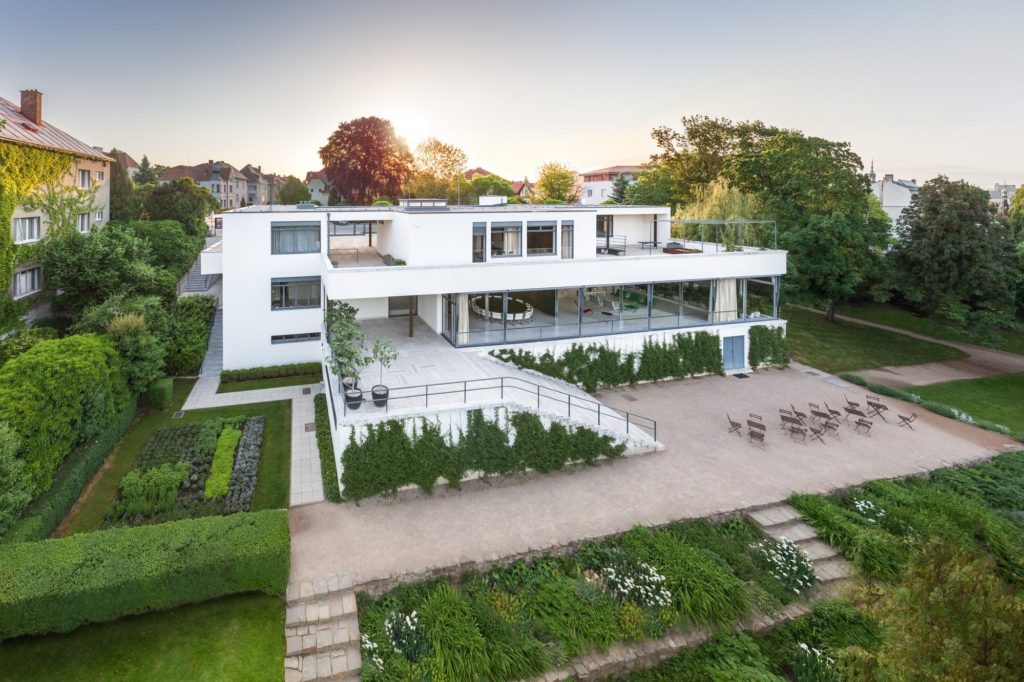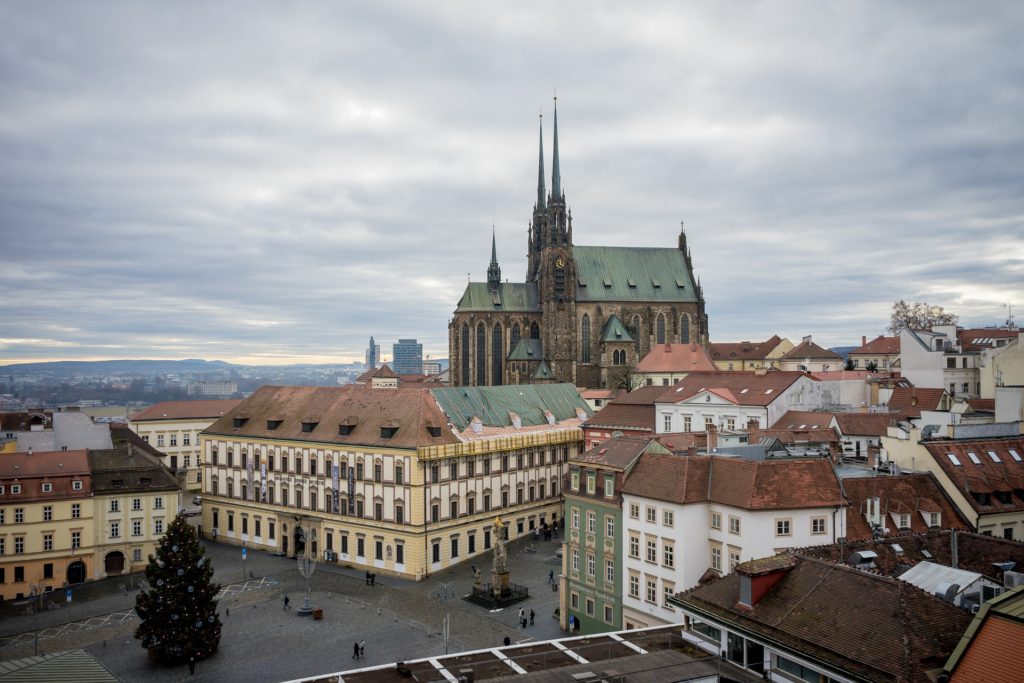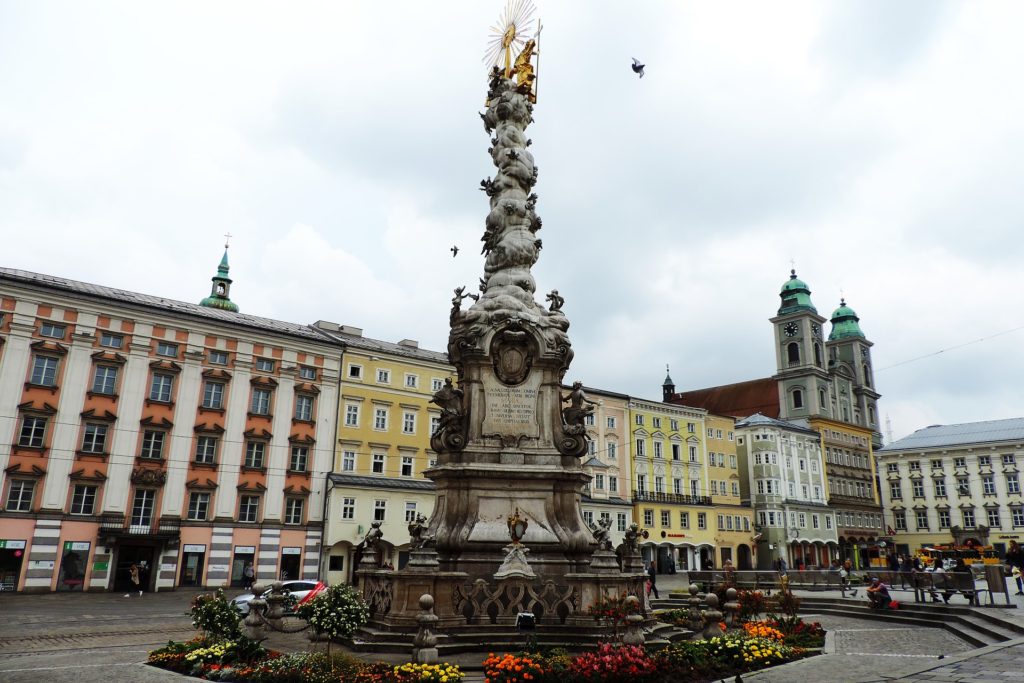The Czech Republic is a landlocked country that can be found in the centre of Europe and has territory on all sides of it. It is composed of the historical regions of Bohemia, Moravia, and a piece of Silesia, and it is located in the midst of a temperate zone in the northern hemisphere. In addition, the climate here is classified as humid continental. The following nations surround the state on all sides: Poland (761.8 km), Germany (810.3 km), Austria (466.3 km), and Slovakia (251.8 km.)
The Bohemian Massif and the Western Carpathians are the two mountain ranges that physically divide the Czech Republic from the rest of Europe. The river basins that drain into the Baltic and Black Seas are separate from one another, and the Czech Republic’s most important watersheds are located in northern Europe.
The Czech Republic is often chosen as a holiday destination by travellers who are interested in deviating from the standard route that visitors typically follow while travelling around Europe. Due to the fact that this small landlocked nation was mostly spared by the world wars and due to the fact that the region has been occupied by a number of different administrations over the course of the millennia, each of which has its own architectural influences, it has become a popular tourist destination for those who enjoy ancient buildings.
Outside of the capital city of the Czech Republic, you’ll discover a significant drop in the number of visitors as well as an incredible number of traditional historical monuments, some of which are included on the UNESCO World Heritage List.
Ride of the Kings, southeast Czech Republic
UNESCO has acknowledged the Moravian Slovakia Ride of the Kings as an important component of the intangible cultural heritage of the Czech Republic. This one-of-a-kind tradition takes place in the Czech Republic and is known as the “Ride of the Kings.” It is scheduled to take place on the final weekend of May in a variety of towns and villages spread out over Moravian Slovakia and Haná. Only in Vlnov, which has a history dating back more than two centuries, is it commemorated on an annual basis. This makes it the only site in the world where it occurs.
There are several legends that have been told from generation to generation about the Ride of the Kings. The one that gained the greatest notoriety was the time when King George of Podbrady of the Czech Republic attempted to seize King Matthew Corvin of Hungary, but Corvin and his whole court managed to elude captivity. He pretended to be a woman in order to escape being recognised and apprehended, and he did this by donning a rose on his upper lip and covering his face with ribbons. He went to these lengths in order to get away from his pursuers.
A little kid who adorns himself with ribbons around his head and a rose pressed into the centre of his upper lip is the reigning monarch of the modern-day. He approaches the hamlet while riding a white horse, and he gives his entourage instructions to dance in the hopes of gaining the favour of the people who are watching and receiving a present from them. The whole of the hamlet is swept up in the frenzy of festivities, and it is at these times that you will get the chance to observe people dressed in elaborate traditional costume that has been passed down from one generation to the next. May is the month when Vlnov hosts the most prestigious race of the year, which takes place every year. The celebrations officially begin the night before, when locals gather in what is known as bdy, which are wine caves located on the outskirts of town, to drink and sing.
The Ride of the Kings is an authentic event that will both educate you about the diverse culture of Moravian Slovakia and provide you with the chance to directly engage with that culture. Even though the majority of the activities, such as the parade and the celebration, take place on Sunday, the neighbourhood is bustling with activity throughout the entire weekend. A continuous pulse provided by cymbals and brass instruments ensures that the hamlet is always busy with activity. The gourmet delicacies that will be brought to your table will assault each of your senses in their own unique way. You should make it a point not to miss out on the one-of-a-kind sweets that have been produced just for this occasion, and you can wash them down with plum brandy that has been created locally or exquisite wine from the region. At the artisan fairs, you can also purchase unique mementoes.

Ride of the Kings, southeast Czech Republic
Tugendhat villa, brno
The Villa Tugendhat was there to see both the birth of modern houses and the terrible end of the people who called it home during that time period. Both events occurred within the same time period. This architectural masterpiece, which is frequently regarded to be among the top four most important villas in the world, was designed by the famous German architect Mies van der Rohe. Mies van der Rohe was responsible for the development of this architectural masterpiece. The committee that decides which sites become part of the UNESCO World Heritage List considered this modern architectural masterpiece and came to the conclusion that it should be included.
In the domestic architecture that was established in the contemporary 20th century, the Tugendhat Villa that was built in Brno was a revolutionary achievement that was accomplished. The magnificent structure known as Villa Tugendhat can be seen in Brno, which is located in the Czech Republic. The German architects Ludwig Mies van der Rohe and Lilly Reich are credited with conceiving and designing the building, which is widely acknowledged as being among the first instances of modern architecture in Europe with the greatest early influence. Ludwig Mies van der Rohe was the architect who designed and built this modernist mansion in 1929. Fritz and Grete Tugendhat and their children were the first people to call this house their home.
The groundbreaking spatial and aesthetic elements that it brought into the field of housing at the time make it significant. Through the use of the possibilities offered by current industrial production, these principles were established to meet the new demands imposed by a contemporary way of life. This was done in order to meet the new needs imposed by a contemporary way of life. It is a breathtaking open-plan family house that was a wedding gift from Grete’s father, who offered infinite finances, and it has exotic woods, imported stone, and a feature wall made of onyx. Grete’s father, who provided an unending supply of riches, gave the couple the home as a wedding present.
Before they relocated to Switzerland, a Jewish family by the name of the Tugendhats made this place home for almost eight years. The Gestapo occupied the property and used it for a range of functions, ranging from a gym to a stable, which ultimately led to the property sustaining substantial damage as a consequence of these activities. This mansion, which has since been subjected to considerable repairs, was the location of the signing of the agreement that broke apart Czechoslovakia in the year 1992. It was used as the setting for the signing ceremony when it took place at the time. In the year 1994, it became a museum for the very first time.

Tugendhat Villa, Brno Image Source: Ministry of Foreign Affairs of the Czech Republic
Modrotisk, Moravia
The technique of dying with indigo that is used in the Czech Republic is called modrotisk, which literally translates to “blueprint.” Craftspeople use a formula that has been kept a secret for hundreds of years and has been passed down through generations to put a particular paste on wooden blocks. When the paste is stamped into white cotton, it prevents the indigo from staining the cloth, resulting in designs that are often seen in the traditional costume of certain geographic regions.
At the Stránice Blueprint Workshop, Gabriela Bartoková is a member of the staff. Her great-great-grandfather was the first person to utilise these blocks, which date back to 1906. She makes the observation that the process of generating this work that is recognised by UNESCO needs working “more with your heart than your hands” as she proceeds carefully and deliberately through the procedure.

Modrotisk, Moravia
Puppetry
The rich history of puppetry in the Czech Republic was recognised by UNESCO, which resulted in the art form being included in a list of intangible cultural items that need to be preserved for future generations. Puppets made of carved wood and finger puppets are available for purchase at any establishment that also sells souvenirs. Having said that, were you aware that you could go to a puppet theatre and see a play there? The Czech Republic is home to nine professional puppet theatres in addition to its approximately one hundred independent organisations and three hundred amateur companies.
In the middle of the nineteenth century, a significant cultural and social phenomenon known as Czech puppetry evolved in the nation. Today, this phenomenon is known as Czech puppet theatre. The art of puppetry may be traced back to the middle of the 18th century in several parts of what is now the Czech Republic. These locations include the Czech Republic and Slovakia. Puppetry, which was included on the UNESCO Representative List of the Intangible Cultural Heritage of Humanity in 2016, is a cornerstone of Czech traditional entertainment and provides a solid basis for the industry.
It may range from little puppet stages that are erected in the living rooms of families to enormous puppet theatres that have been constructed from the ground up for that specific purpose. Puppets in the Czech Republic are historically crafted by experienced artisans out of wood and may reach a height of one metre. Puppets are used in a variety of performances around the country. After then, it is the job of skilled puppeteers to bring the characters portrayed by the puppets to life on stage. The Marionette Museum in esk Krumlov, which can be seen above in the photo that acts as our banner and is also a historic town that is recognised by UNESCO, is where one may get an overview of the history of this Czech custom. UNESCO has designated esk Krumlov as a World Heritage Site.
Puppeteers would travel from city to city, putting on shows in Czech, which assisted the general population is becoming more proficient in the language. Puppeteer families gradually developed a tradition, and finally, puppetry evolved into a family craft that was passed down from one generation to the next.
Puppeteers were the individuals responsible for the fabrication of the puppets, which were often modelled by works of art from the Baroque period. A puppeteer was responsible for operating and providing dialogue for each and every one of the show’s puppets and characters. The rigid movement of marionettes on wires was balanced with a stylized vocal delivery, which resulted in the creation of a particular style. Because of this, a distinctive manner of expression emerged. The Clown, the King, the Princess, and the Devil are all examples of traditional humorous characters that Czech puppeteers have produced throughout the years. The bulk of works at puppet theatres nowadays are geared toward younger audiences. This is in contrast to the historical practice of adapting folktales into plays, which was common practice.
There are presently two branches of the tradition of puppetry in the Czech Republic: folk or amateur puppetry, and professional puppetry. Both branches are rooted in the country’s rich history. Both of these subgenres may be seen performed in theatres as well as in independent scenes. The second part of the 20th century saw an increase in the popularity of children’s television programmes that included short stories delivered via the use of puppets. The ones that include the use of puppets are among the most well-liked by audiences comprised of younger people.
The White Carpathians
Moravian Slovakia is the name given to this picturesque region that straddles the border between Moravia and Slovakia. For millennia, this area has been carefully cultivated by the harmonious cohabitation of humans and their natural surroundings. Moravian Slovakia is situated in Slovakia. The White Carpathians, which are well-known for their extensive meadowlands, has been designated as a biodiversity reserve by UNESCO because the organisation considers them to be one of the most significant meadow biotopes in Europe. The broad meadows and low hills that stretch along the border with Slovakia were designated as a UNESCO Biosphere Reserve in the year 1996. These hills and meadows are located near the Slovakian border. A protected area that encompasses 71,000 hectares may have expansive orchid meadows and grasslands, as well as woodland regions and fruit orchards. The total size is measured in kilometres squared. The White Carpathians are a wonderful spot to go for either a leisurely stroll or a strenuous hike due to the abundance of routes that are well signposted across the area.
If you have an interest in orchids, you really have to make the trip to the White Carpathians to see the world-famous orchid fields. These meadows are home to the most widespread concentration of orchids and the widest range of orchid species that can be found anywhere in Central Europe. Your sense of aesthetics will be satisfied by the rural farms, which are bordered by fields, orchards, and pastures, in addition to enormous forests that are abundant in Carpathian flora and animals.
Both the Ertoryje Nature Reserve and the Jazev Nature Reserve are consistently ranked among the region’s most popular tourist destinations. Another well-known location is Velká Javoina, which stands at 970 metres and is the highest point in the White Carpathians. Not only does it provide stunning vistas that stretch far into Moravia and Slovakia, but it is also home to a venerable forest that is populated by beech trees that are hundreds of years old or more. While travelling through educational routes such as the Javoina, umárnk, and Lopenk, you will not only learn new things but also see a variety of fascinating locations. On the lower slopes and foothills of the White Carpathians, there is a sophisticated network of hiking trails, cycling routes, and a large number of historical sites. Anyone who is interested in doing anything more than just admiring the beauty of nature is welcome to become a part of our network.
Holy Trinity Column, Olomouc
To construct a monument that is unparalleled in terms of its magnitude, riches, and aesthetic appeal. When the citizens of Olomouc erected the Holy Trinity Column in Olomouc, they did so with this purpose in mind. This column, which is the biggest freestanding Baroque sculpture in Central Europe, was included in the UNESCO list because of the historical and cultural importance it has.
This Moravian Baroque column of 35 metres in height was constructed at the beginning of the 18th century. This monument is home to the greatest collection of Baroque sculptures that can be seen anywhere in the whole of Central Europe. In the beginning, it was created as a memorial to the Catholic history of the town as a way of expressing gratitude to God for protecting the city from the plague.
There is complete anarchy in the column’s narrative when it comes to Olomouc. The motivation for its founding was provided by one of the most severe outbreaks of the plague that occurred in Moravia at the beginning of the 18th century. Even though there was already one disease column in town at the time, they did not believe it to be dramatic enough and did not publish it. When construction on the Holy Trinity Column in Olomouc was finally finished, the landmark immediately became a point of civic pride for the city’s inhabitants, who had already grown to admire the Holy Trinity Column for its unique personality and artistic value it had. Due to the fact that they were determined to complete their task, they went about trying to persuade the Prussian commander not to fire against their column when the city was under siege. The liberal general acceded to their demands, and as a result, the original splendour of the area may still be admired to this day.
The Holy Trinity Column in Olomouc was designed with the cosmic order as its primary source of inspiration. Sculptures depicting saints, apostles, and other personifications of virtue may be found on each of the three floors. Above them is a massive sculptural group depicting the Assumption of the Virgin Mary, and at the very top of the column is a conspicuous depiction of the Holy Trinity. In order to demonstrate the significance of the column, Empress Maria Theresa was a part of the ceremony when it was consecrated.
Sitting at the base of the Holy Trinity Column in Olomouc is a great way to get a sense of the vibe that is prevalent in the city at the present time. A fantastic background for this massive but harmonious Baroque piece of art is provided by the city’s palaces, cafes that inspire amazement in visitors, and the students attending the local universities.

Holy Trinity Column
Kroměříž Gardens and Castle at Kroměříž
There is not the slightest bit of doubt in anyone’s mind that Krom is without a doubt one of the most beautiful cities that can be found anywhere in the Czech Republic. The lovely mediaeval city with its townhouses and arcades, the large archbishop’s palace, the gorgeous gardens that surround it, and the archbishop’s cellars, which are recognised for their superb wine. This is Haná’s version of Athens, a city that has been designated by UNESCO as a World Heritage Site because of the stunning natural and man-made structures that can be found there.
Krom was established in the 13th century and at first, functioned as a bishops’ city that was first governed by Olomouc. They put in a lot of hard work over the course of a number of years in order to construct here a stunning summer castle that was worthy of their high location and vast money. Krom is a veritable architectural treasure chest as a result of the many structures that have been constructed there over the course of the millennia and which continue to wow the travellers who visit with their spectacular beauty. This is because a large number of buildings and other structures have been constructed in that area.
Krom is reminiscent of the Garden of Eden during the summer months due to the abundance of lush vegetation in the area. The gardens in the region have been recognised as a UNESCO World Heritage Site because of the exceptional way in which they incorporate several components of the natural world, including light, plants, water, and sculpture. The castle and the grounds it contains are among the best that can be found in any place in the world. Consequently, if you go down the colonnade and enter the antique greenhouses, you will find that you are surrounded by a maze-like enclosure of green walls. The centre of this UNESCO World Heritage Site is occupied by a sizable baroque chateau, the high tower of which offers a breathtaking panorama over the surrounding area, including the city, its stunning gardens, and the wider landscape.
Gardens are Kroměříž’s most valuable asset. The Flower Garden, which was built in the middle of the 17th century, is perfectly symmetrical down to the tiniest of details. It is adorned to the hilt with statues and fountains that have water jets in their designs. The building’s core is characterised by the presence of rotundas. A magnificent colonnade that is embellished with statues of ancient deities can be seen on one of the sides. The Chateau Garden is unrivalled in its status as the best possible example of a park that is both well-kept and home to a diverse range of plant life.
In order to preserve the flooring that is over two centuries old, guests will be required to wear slippers that are provided by the castle. Check out the chandeliers that are made of Czech glass, the library that has 88,000 volumes, and the dining room that is designed in the Rococo style and has 2,000 seats. Salzburg was used as a stand-in for the opulent interiors of Amadeus’s palaces throughout the film.

Kroměříž Gardens and Castle at Kroměříž
Litomyšl Castle
You may take some time for yourself to unwind while also gaining an understanding of the background of Litomyl. Visit the Renaissance chateau that is on the list of UNESCO World Heritage Sites, walk in the footsteps of composer Bedrich Smetana, daydream in the lovely gardens, or investigate the one-of-a-kind painted museum known as the Portmoneum.

Litomyšl Castle
The outside of the castle is covered with 8,000 sgraffito “envelopes,” each of which depicts a unique event or scene. The most interesting of the numerous formal rooms in the castle is the theatre, which was where the nobles of the 16th century used to amuse themselves with a French garden set. The apartment that was Bedich Smetana’s birthplace can be found in the ancient castle brewery, which is another historically significant structure that is part of the castle complex.











Subscribe To Our Newsletter
Join our mailing list to receive the latest news and updates from our team.
You have Successfully Subscribed!